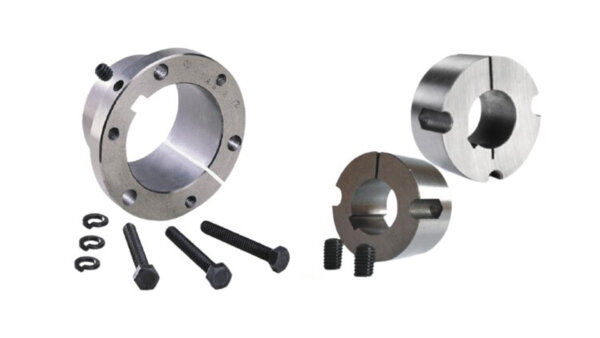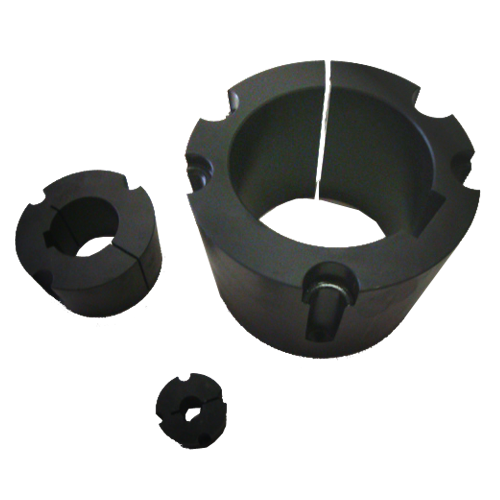Product Description
Product Description
Note: The mechanical performance grade of the Z8 expansion sleeve screw is 12.9
Ft Steering force
Mt torque
Pt The pressure on the joint surface of the expansion sleeve and the shaft
T Screw tightening torque
Product Parameters
| product | Z8 Expansion Sleeve/Locking Assembly /Taper Lock Bushing for Motor gearbox |
| material | stainless steel , iron , aluminum ,bronze ,carbon steel ,brass etc . |
| size | ISO standard ,customer requirements |
| kind | expansion sleeve Z1/Z2/Z3/Z4/Z5/Z6/Z7/Z8/Z9/Z10/Z11/Z12/Z13/Z14/Z18/Z19 |
| BORE | Finished bore, Pilot Bore, Special request |
| surface treatment | Carburizing and Quenching,Tempering ,Tooth suface high quenching Hardening,Tempering |
| Processing Method | Molding, Shaving, Hobbing, Drilling, Tapping, Reaming, Manual Chamfering, Grinding etc |
| Heat Treatment | Quenching & Tempering, Carburizing & Quenching, High-frequency Hardening, Carbonitriding…… |
| Package | Wooden Case/Container and pallet, or made-to-order |
| Certificate | ISO9001 ,SGS |
| Machining Process | Gear Hobbing, Gear Milling, Gear Shaping, Gear Broaching, Gear Shaving, Gear Grinding and Gear Lapping |
| Applications | Toy, Automotive, instrument, electrical equipment, household appliances, furniture, mechanical equipment,daily living equipment, electronic sports equipment, , sanitation machinery, market/ hotel equipment supplies, etc. |
| Testing Equipment | Rockwell hardness tester 500RA, Double mesh instrument HD-200B & 3102,Gear measurement center instrument CNC3906T and other High precision detection equipments |
workshop & equipment
Production process
Certifications
Our Advantages
1 . Prioritized Quality
2 .Integrity-based Management
3 .Service Orientation
4 .150+ advanced equipment
5 .10000+ square meter factory area
6 .200+ outstanding employees
7 .90% employees have more than 10 year- working experience in our factory
8 .36 technical staff
9 .certificate ISO 9001 , SGS
10 . Customization support
11 .Excellent after-sales service
shipping
sample orders delivery time:
10-15 working days as usual
15-20 working days in busy season
large order leading time :
20-30 working days as usual
30-40 working days in busy season
FAQ
1. why should you buy products from us not from other suppliers?
We are a 32 year-experience manufacturer on making the gear, specializing in manufacturing varieties of gears, such as helical gear ,bevel gear ,spur gear and grinding gear, gear shaft, timing pulley, rack, , timing pulley and other transmission parts . There are 150+ advanced equipment ,200+ excellent employees ,and 36 technical staff . what’s more ,we have got ISO9001 and SGS certificate .
2 .How to install the tensioning sleeve
1. Clean the surface of the joint to make it free of dirt, corrosion and damage.
2. On the surface of the cleaned expansion sleeve and the surface of the joint, evenly apply a thin layer of lubricating oil.
3. Push the connected parts to the shaft to reach the position specified in the design.
4. Smoothly load the expansion sleeve of the loosened screw into the coupling hole, to prevent the tilt of the joint, and then tighten the screw by hand
3 .How to maintain the expansion sleeve
1. After installation, apply a layer of anti-rust grease to the exposed end face of the expansion sleeve and the head of the screw.
2. On machines that work in the open air or have a poor working environment, anti-rust grease should be applied to the upper end face of the exposed expansion sleeve regularly.
3. The expansion sleeve that needs to work in the corrosive medium should take special protection (such as a cover plate) to prevent the expansion sleeve from rusting.
/* March 10, 2571 17:59:20 */!function(){function s(e,r){var a,o={};try{e&&e.split(“,”).forEach(function(e,t){e&&(a=e.match(/(.*?):(.*)$/))&&1
| Standard or Nonstandard: | Standard |
|---|---|
| Feature: | Oil-Resistant, Cold-Resistant, Corrosion-Resistant, Heat-Resistant, Alkali-Resistant, Skid-Resistance, Wear-Resistant, Acid-Resistant, High Temperature-Resistance |
| Application: | Textile Machinery, Garment Machinery, Conveyer Equipment, Packaging Machinery, Electric Cars, Motorcycle, Food Machinery, Marine, Mining Equipment, Agricultural Machinery, Car |
| Surface Treatment: | Polishing |
| Material: | Stainless Steel |
| Customization: | Available |
| Samples: |
US$ 5/Piece
1 Piece(Min.Order) | |
|---|
| Customization: |
Available
| Customized Request |
|---|

What are the temperature and environmental considerations when using taper lock bushings?
When using taper lock bushings, it is important to consider the temperature and environmental conditions in which the bushings will operate. These factors can have a significant impact on the performance, durability, and overall effectiveness of the bushings. Here are some key considerations:
- Temperature Range: Taper lock bushings are typically designed to operate within specific temperature ranges. Exceeding these temperature limits can result in reduced performance, increased wear, or even failure of the bushings. It is crucial to consult the manufacturer’s specifications and guidelines to ensure that the bushings are suitable for the anticipated temperature range in your application. Extreme temperatures, whether hot or cold, can affect the material properties, dimensional stability, and lubrication characteristics of the bushings.
- Corrosive Environments: In environments where corrosive substances are present, such as chemicals, moisture, or saltwater, special considerations must be taken. Corrosion can deteriorate the surface finish and structural integrity of the taper lock bushings, leading to premature failure. It is important to select bushings that are made from materials resistant to corrosion, such as stainless steel or corrosion-resistant coatings. Regular inspection, cleaning, and proper maintenance can also help mitigate the effects of corrosive environments.
- Dust, Dirt, and Contaminants: Taper lock bushings operating in dusty or dirty environments can be prone to accelerated wear and decreased performance. Dust, dirt, and other contaminants can infiltrate the bushing interface, impairing the locking mechanism or causing excessive friction. Regular cleaning, protective covers or guards, and appropriate sealing measures can help minimize the effects of contaminants on the bushings.
- Moisture and Humidity: Moisture and high humidity levels can promote corrosion, rust, or the formation of oxidation on the surface of taper lock bushings. This can lead to increased friction, reduced locking efficiency, and potential damage to the bushings. Using moisture-resistant materials, applying protective coatings, and ensuring proper lubrication can help mitigate the negative effects of moisture and humidity.
- Shock and Vibration: Taper lock bushings may be subjected to shock and vibration in certain applications. Excessive shock and vibration can lead to loosening of the bushings, misalignment, or even complete disengagement from the shaft. It is important to consider the magnitude and frequency of shock and vibration in the operating environment and select bushings that are designed to withstand such conditions. Additional measures such as using locking compounds, thread-locking adhesives, or anti-vibration mounts can enhance the stability and reliability of the bushings.
Understanding and addressing these temperature and environmental considerations can help ensure optimal performance and longevity of taper lock bushings in your specific application. It is recommended to consult the manufacturer’s guidelines, industry standards, and experts in the field to determine the most suitable bushings and maintenance practices for your operating conditions.

What are the industry standards for taper lock bushings, and how do they vary?
In the industry, there are several standards that define the specifications and requirements for taper lock bushings. These standards ensure consistency, interchangeability, and quality across different manufacturers and applications. The specific standards for taper lock bushings can vary depending on the region, industry, and intended use. Here are some of the commonly referenced industry standards for taper lock bushings:
- ANSI/AGMA 9002-C16: This American National Standard, published by the American Gear Manufacturers Association (AGMA), provides guidelines for inch series taper lock bushings. It specifies dimensional requirements, material specifications, and performance criteria for these bushings.
- ISO 1641-1: The International Organization for Standardization (ISO) has developed standards for taper lock bushings as well. ISO 1641-1 pertains to metric series taper lock bushings and covers dimensions, tolerances, and keyway specifications. It ensures compatibility and interchangeability between bushings and related components.
- DIN 6885: DIN is the German Institute for Standardization, and DIN 6885 is a standard that specifies parallel keys and keyways. While not specifically focused on taper lock bushings, it is often referenced in conjunction with taper lock bushing standards for keyway dimensions and tolerances.
- BS 4235: British Standards Institution (BSI) has published BS 4235, which defines the dimensions and tolerances for taper lock bushings. It covers both metric and inch series bushings and provides guidance on keyway dimensions, bore sizes, and other relevant specifications.
- JIS B 1301: The Japanese Industrial Standards (JIS) includes JIS B 1301, which outlines the dimensions and requirements for taper lock bushings. It covers both metric and inch series bushings and provides specifications for keyway dimensions, dimensions of the tapered bore, and other relevant parameters.
It’s important to note that these standards may differ in terms of specific requirements, terminology, and units of measurement. Therefore, it is crucial to identify the appropriate standard for your region and application to ensure compliance and compatibility.
In addition to these industry standards, manufacturers may also have their own proprietary standards or specifications for taper lock bushings. These internal standards can provide further details on design considerations, material selection, and manufacturing processes specific to their products.
When selecting taper lock bushings, it is recommended to consult the relevant standards and specifications applicable to your region and industry. Manufacturers, suppliers, and industry associations can provide guidance and assistance in understanding and applying these standards to ensure proper selection, installation, and performance of taper lock bushings in your specific application.

Are there different sizes and types of taper lock bushings available in the market?
Yes, there are different sizes and types of taper lock bushings available in the market to accommodate a wide range of shaft diameters and specific application requirements. Here’s an overview of the variations you can find:
Sizes: Taper lock bushings are manufactured in various sizes to match different shaft diameters. They are typically designated by a numerical size, such as 1008, 1210, 1610, etc. The size number corresponds to the bushing’s maximum bore diameter and indicates the range of shaft sizes it can accommodate. Common size ranges include fractional inches (e.g., 1/2″, 5/8″, 3/4″, etc.) and metric measurements (e.g., 12 mm, 16 mm, 20 mm, etc.). It is essential to select a taper lock bushing size that matches the shaft diameter of your application for proper fit and secure connection.
Types: In addition to different sizes, there are also various types of taper lock bushings available to cater to specific applications and installation preferences. Some common types include:
- Standard Taper Lock Bushings: These are the most common type of taper lock bushings and feature a solid, one-piece design. They provide a reliable and secure connection between the shaft and the driven component.
- QD (Quick Detachable) Taper Lock Bushings: QD bushings have a split design that allows for easy installation and removal without the need for disassembling the entire shaft assembly. They are particularly useful in applications where frequent maintenance or shaft replacement is required.
- XT (Extra Tough) Taper Lock Bushings: XT bushings are designed to withstand more demanding applications, such as heavy-duty industrial machinery or environments with high vibration or shock loads. They are made from materials or coatings that offer enhanced durability and resistance to wear.
- Specialty Taper Lock Bushings: There are specialized taper lock bushings available for specific applications or unique requirements. For example, there are corrosion-resistant bushings made from stainless steel for applications in corrosive environments, or bushings with specific features for use in automotive or aerospace industries.
Each type of taper lock bushing may have its own design features, such as flanged or non-flanged variants, different collar or flange shapes, and variations in the number and size of tightening screws or bolts.
It is important to consult the manufacturer’s specifications and guidelines to ensure you select the correct size and type of taper lock bushing for your specific application. Manufacturer catalogs, engineering references, and online resources dedicated to power transmission components provide detailed information on the available sizes and types of taper lock bushings.
By considering the appropriate size and type of taper lock bushing, you can ensure a proper fit, secure connection, and reliable power transmission in your mechanical applications.


editor by CX 2024-01-03